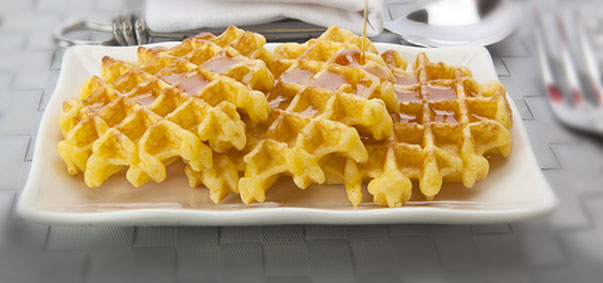THE SECRET OF KITCHEN HAPPINESS.
Mrs. Newton C. Wing, Chairman Home Economics.
Atlanta Woman’s Club Cookbook, 1921
House-work may be made either a delight or drudgery, according to the mental attitude which accompanies it. It is impossible, naturally, to love one’s house-work, if one does not have the proper equipment and if one’s house, especially the kitchen, is not properly arranged, ventilated and lighted. We realize that few houses are built which follow any scientific arrangement as to the kitchen. Speed the day when the architect and the experienced house wife will together plan all kitchens. In building a new house, the housewife should insist on having the kitchen built as she desires, always considering, of course that it harmonizes with the general architectural plans of the house.
Even if a house wife employs servants, she can not secure that servant’s contentment or best efforts, unless she saves her time and strength by labor-saving methods.
MORE EFFICIENCY MAY BE SECURED
I. By having a small kitchen, (but not crowded).
II. By covering walls with washable materials such as tile, enamel, or any good washable paint.
III. By covering the floor with linoleum, one with dark background being preferred. Wax well after laying.
IV. By grouping certain apparatus and utensils, according to their use. Common sense shows that many steps are avoided if:
First—The sink, with its two large drain boards, one on eachside, is placed next to the dining room or pantry. Ideal arrangement consists in having a dish-window opening directly between the dish-closet and the sink. This should be large enough to allow the passage of the wire dish drainer filled with dishes. Soiled dishes are placed on right hand drain board, where they are picked up by the dish-washer’s right hand, scrubbed under running water, by brush held in left hand, and then placed in dish pan. When pan is full, place one tablespoon of washing powder over dishes (this is enough to cut grease, but does not make water soapy) , fill pan with very hot water. With dishmop tilt plates until easily grasped by left hand, rub with dish mop, and place in dish drainer at left. Very much hotter water may be used than in the old fashioned way of using a dishcloth,—the hot water filling the two-fold purpose of
cleaning the dishes and making them dry more easily. When drainer is full, pass thru dish-window or carry to dish-closet. This leaves room for washing cooking dishes and by the time these are done the china dishes are dry and sparkling and may be put away in the china closet without wiping. This is much more sanitary than the old way of wiping with dish towel, which is never perfectly dry and clean except for the first dish. Towels of best linen toweling should of course be used for glasses and silver. Sinks and tables are generally built too low. Housewives should insist on having sinks built, so that, without stooping, one may touch the inside floor of the sink with the flat of the hand. The same holds good with the tables (note the height of kitchen cabinet table). For the average person, the height of sinks, etc., should be 36 inches.
Second—The stove should be next to dining room door on the other side from the sink to facilitate serving. Thus a tea wagon can be used both to take food directly from the stove to the dining room table and also to bring soiled dishes from the table to the sink.
Third—Grouped on opposite side from the stove, should be the kitchen cabinet, and working table with store closet near. If table is on casters, it can be rolled over near table or sink when needed.
Fourth—If the kitchen is sufficiently large there should be a rest corner with a desk and bookcase above for working on kitchen accounts and for keeping cook books thus utilizing the spare minutes which often occur in the kitchen while meals are cooking.
NECESSARY IN THE KITCHEN
KITCHEN FURNISHINGS AND APPURTENANCES.
1 chair (or more).
1 rocking chair (if there is room).
1 white porcelain table on rollers (should have drawer)
Book shelf for cook books, etc.
Electric toaster.
Ice-cream freezer.
Fireless cooker.
Refrigerator.
Meat grinder.
Ice-pick.
Ironing-board.
Waffle iron.
Tea wagon.
Electric flat iron and rest.
Electric washing machine
As far as we’ve come, I don’t know many cooks who couldn’t make do with this list, although I’m not too sure what a fireless cooker is. Sadly I have no servants and I can’t remember what a day off looks like. This is a real glimpse into life in Atlanta at the turn of the century.
Katherine Martinelli told us about these remarkable cookbooks from the Library of Congress digital collection of American Church, Club and Community Cookbooks from the late 19th and early 20th century. I’ve got nothing done since I found them. If you don’t see me for another week, I’ll be reading cookbooks.

- 2 eggs.
- 2 tbls. sugar.
- 2 tbls. butter.
- 1 teaspoon salt.
- 1 pt. milk.
- Flour to make thin batter. (I used about 2 cups flour)
- 2 large teaspoons baking powder
- Separate the eggs
- Beat yolks and add sugar and salt
- Melt butter then add milk and flour and stir to combine.
- Beat egg whites until stiff (but not dry) peaks form
- Stir one spoonfull of whites into the mixture to lighten and then fold remainder of egg whites and baking powder
- Bake in a hot waffle iron.
